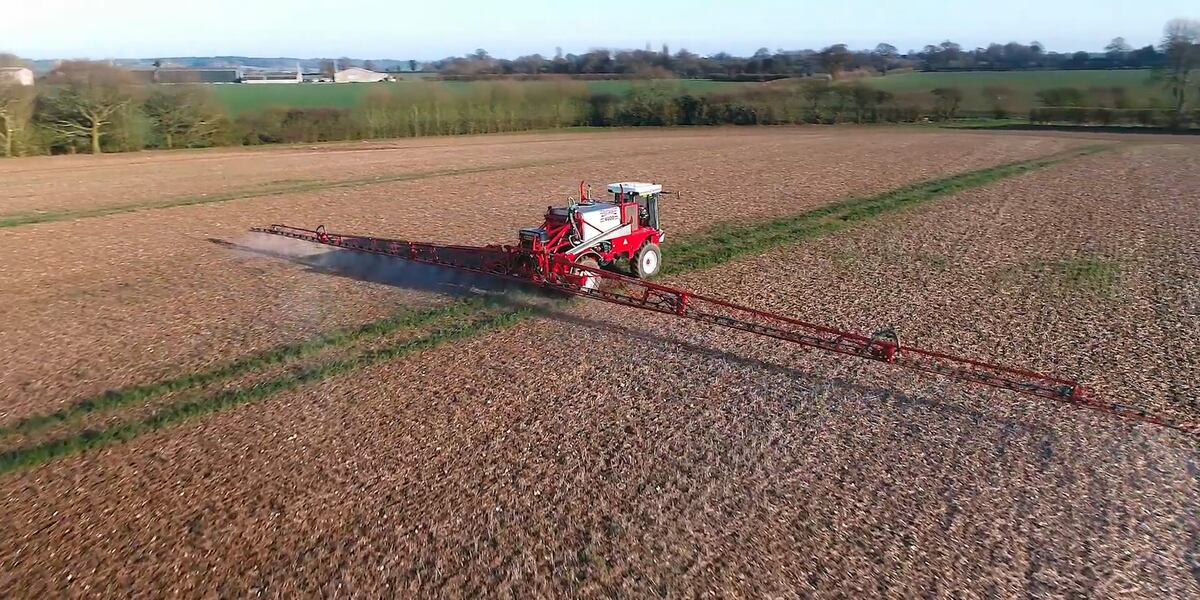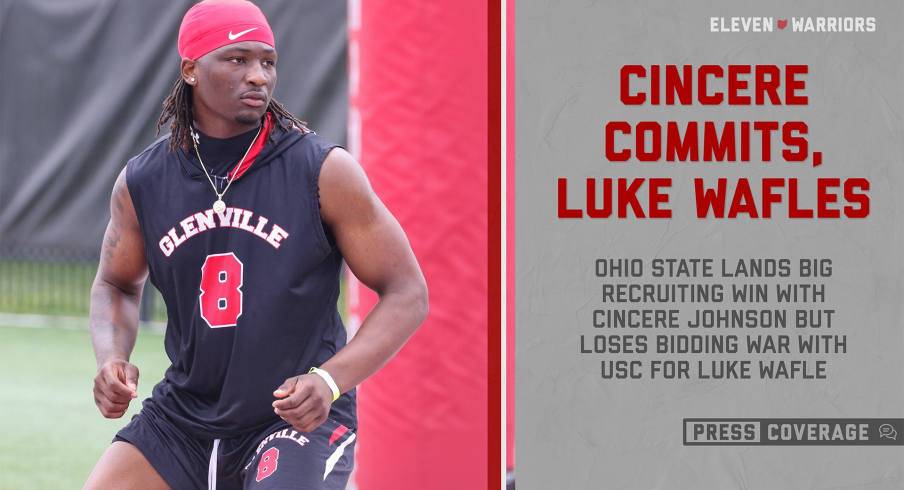Business
In 'generational moment,' Port of L.A. faces shifting winds in business and politics
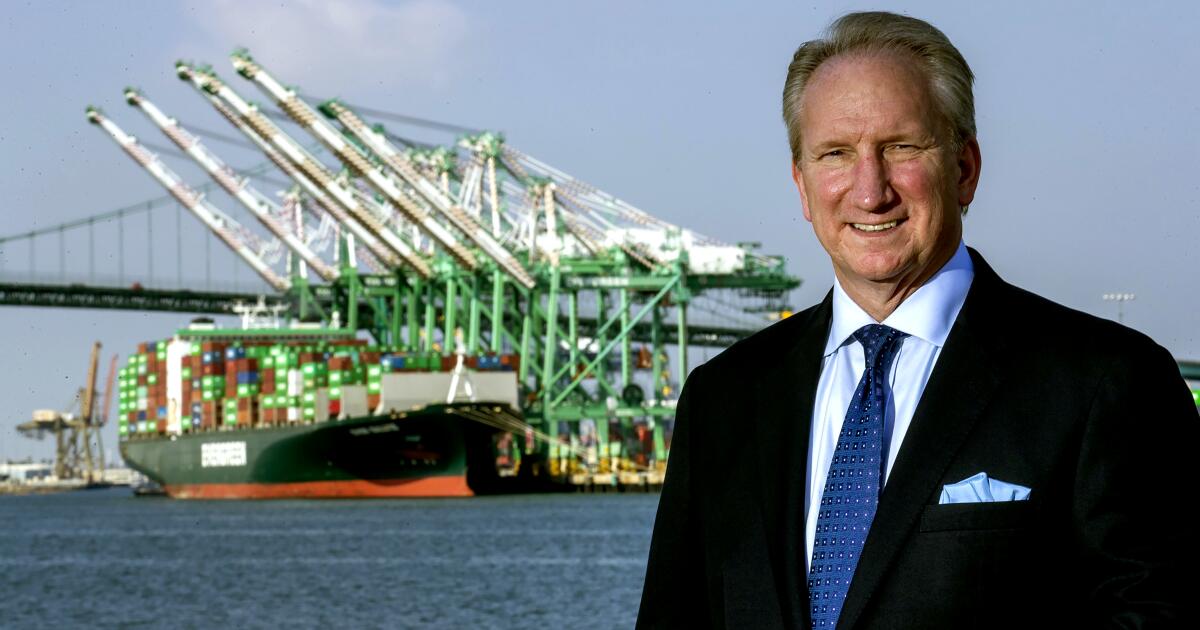
The Port of Los Angeles has long been the single busiest seaport in the Western Hemisphere, employing thousands of Southern Californians and playing a critical role in the vast supply chain that underpins both the California economy and that of the United States as a whole.
Together with neighboring Port of Long Beach in the San Pedro Bay, it handles a whopping 40% of all the container traffic from continental Asia.
But today, as Port of Los Angeles director Gene Seroka puts it, this important but largely anonymous institution faces a “generational moment,” a set of challenges crucial for the regional economy and the well-being of many Americans.
Seroka has been leading the seaport since 2014. He recently sat down with the L.A. Times to discuss key issues involving the port.
We’ve been getting signs of slowing consumer spending. How busy have you been so far this year, and what do you see ahead?
It’s been an extraordinary year. For the first six months of the year, our business is up more than 14%, driven mainly by the strength of the U.S. We also have a dock workers’ negotiation on the East Coast, a drought in the Panama Canal and security issues in the Red Sea leading up to the Suez Canal. Many importers and exporters have told me that fractionally, they’ve shifted some of their allocation our way to hedge against any worsening in those three areas.
You’ve made many trips to Washington, including for three meetings with President Biden. What might changes in the White House and Congress mean for future funding and support?
Well, that remains to be a pretty big question mark. We’ve had unprecedented progress in the area of focus on ports, and a lot of it was brought to light because of the supply chain crunch that we saw during COVID. We saw the bipartisan Infrastructure Investment and Jobs Act that was passed, the Inflation Reduction Act, and now the Environmental Protection Agency call for applications on the Clean Ports Program, which should be announced sometime in the fourth quarter of this year.
What I’ve seen so far is that in the last three years, we’ve submitted applications for more than $1 billion in [federal and state] grant money, and we’ve earned over $380 million. That’s probably our best three-year period that I can recall.
Depending on what happens in November, can things shift?
The infrastructure law runs through ’26, but based on my own experience, yes. I think we could see more of the same type and better support, or we could see a complete reverse.
What would create that?
Changing policy, changing focus away from the state of California. I don’t want to speculate, but I have seen what it looked like — the lack of access, the lack of any meaningful legislation like the infrastructure act. So, again, I don’t want to speculate, but we’ve had a pretty good run here. This industry, still to this day, even with all the technology and the global trade, it’s still a relationship-based business. And it still is relationships that carry us in Washington and Sacramento today.
And how was your access to and relationship with the Trump administration?
It was very limited, if nonexistent.
What about tariffs? Biden recently increased tariffs on a wider array of Chinese goods — steel, EV cars, solar cells. And there’s potential for even higher, broader tariffs to come, especially if Trump wins.
Dating back to 2018, the previous administration implemented tariffs on a variety of goods originating from China. Those tariffs were met with retaliatory tariffs that really were very impactful on a negative side for a number of American companies, including the agricultural sector. Flash forward, the most recent tariffs that the Biden administration put in were on $18 billion worth of goods. It’s a very narrow, targeted approach to tariffs. So I don’t see that impacting the Port of Los Angeles. What we’ve seen with tariffs policy, and in some cases rhetoric, is that here at the Port of Los Angeles, the portfolio with China is now down to about 45% [from 57% three years ago].
How much potential do other countries around the Pacific Rim have for becoming alternatives to China in terms of manufacturing?
No one can replace China as a manufacturing hub. But we’ve made up that difference by capturing cargo from other markets, and specifically Southeast Asia – Vietnam, Indonesia, Thailand, to name three. We’ve also seen growth in manufacturing in Mexico. And while some folks would say, OK, you’re building up more products in Mexico to come across the border by truck or rail, but we’re also feeding components into the maquiladora areas like Mexicali here in Baja, California. So there’s still a market for us to be a strong player, especially as Mexico continues to shine in the manufacturing community.
What about India, which seems to be rising in terms of manufacturing in the global economy?
It is. And I was just in India back in January. I had an opportunity to visit with Ambassador Eric Garcetti. What I can tell you is in the most recent full calendar year, China exported some 260 million 20-foot equivalent units of cargo. India exported 17 million. So while what we see there is opportunity and there is great talent, manufacturing in the same vein that we see in Asia may not happen overnight.
In the early months of the pandemic there were, at one time, more than a hundred cargo ships stuck at sea waiting to berth. What’s to prevent something like that happening again in San Pedro Bay?
Well, that’s job No. 1, in my view. What we did learn with the benefit of history is that this port must remain as a transit facility and not as a warehouse. Unfortunately, back in 2021 and 2022, a number of large importers used this port to store containers. Unbeknownst to us, they had deals with shipping lines to make sure that they could hold their containers here at the port for little to no charge. Once we diagnosed that by doing some data mining through our own system, the Port Optimizer, we were able to start moving cargo again.
No one was trying to hurt us, nothing sinister was taking place. The American consumer was simply buying at a pace that we’ve never witnessed. And importers had to get as much cargo here as quickly as possible, and it was just clogging up the works.
So now the next thing is going to be, how do we make sure that we can anticipate what’s going to take place next in the supply chain? A lot of that comes with data. I’ve been to Asia five times this year so far, and I’ve been to Europe once. I’m spending a lot of my energy talking to importers and exporters, service providers, leadership at the C-suite level to try to make sure I anticipate as much as possible, what’s happening now and what we can expect in the future.
More recently, we all read about the accident in Baltimore last March when a large container ship crashed into the Francis Scott Key Bridge. What’s the potential for such a mishap here, and what have you done to reduce the risk?
Well, we work hard every day at this, led by our head of public safety, Port Police Chief Tom Gazsi. And while vessel engine failures happen, it’s about how we create protocol to prevent that from going any further. We put a minimum of two tugboats on every ship that comes into this port. And for the larger ones, those workhorse vessels, you’ll likely see four tugs tied to a ship in the event of a power failure or engine failure. Those tugs go into action, put the rear thrusters on, slow down and stop that ship as it’s moving.
Also, our bridge has its legs on land. We’ve got rock formation under the channel near the stanchions to prevent a ship from getting anywhere close to it.
What is the longer-term impact of automation and AI at the port? Do you see that as threatening jobs?
Here in Southern California, out of our 13 marine terminals right now, we have three that are automated, and there may be more in the future. The automation or robotics that we see on our marine terminals today really is comprised of the land-side equipment, whether it’s to move containers onto truck chassis or onto rail cars, or for retrieval when the truckers come into the terminals to pick up their imports or drop off their exports.
But it’s our belief that while technology is moving faster than ever, we cannot leave the workforce behind. And that’s part of the motivation of why we just cut the ribbon on a new mechanics training facility on Terminal Island. That’s going to up-skill and re-skill longshoremen members so they can work on newer and greener equipment, and in some cases, automated machines.
Secondly, we have designated 20 acres of property here for the nation’s first workforce training campus dealing with goods movement — to bring people in who need training on trucking, warehousing, even coding [and] technology such as artificial intelligence that will be important to this port in the future.
What are the biggest environmental challenges at the Port of L.A.?
There’s nothing more that we want to see than for ourselves, the Port of Long Beach and others to reach this aspiration of a zero-emission port operation. But there are a lot of things that have to take place. We’ve got to be able to accelerate the technology, make it affordable for small businesses to be able to join.
Please know that of the 20,000 trucks that are registered to do business at the port, more than half are small businesses. We’ve got to make the barriers to entry as plausible as possible. We also have to support them by creating the infrastructure necessary to run these new and cleanest trucks that are possible.
For example, there are 7,500 gasoline stations in the state of California. There are only 46 hydrogen fueling stations. And according to their oversight board, they only work about half the time. There are only 92 high-speed heavy duty truck chargers in the country, less than two per state.
Now, we’ve also been working closely with the shipping industry for the past several years on cleaner and renewable fuels. We call this our green shipping corridor strategy. If we could reduce the emissions from ships moving from our largest trading partner in China, from Shanghai to the ports of L.A. and Long Beach, if we can reduce that emissions by 10%, that would be the equivalent of all the emissions in the Port of Los Angeles for an entire year.
Finally, let me ask you about jobs at the port. What kinds of skills do you look for now and will be looking for in the future?
The interesting thing about this port complex is there are a variety of jobs and skill sets that are always in demand. For example, we talk a lot about the people that actually move the cargo — the longshoremen, the marine clerks, the truck drivers and warehouse folks, the mechanics are all vital to this port. And that’s part of the motivation for us setting up that mechanic center as well as the broader goods movement training campus that I spoke of on the 20 acres of property at the Port of Los Angeles.
The other piece is that you’ve got a growing community here in this harbor enclave. There are 260,000 residents, a lot of young kids going through school that see this port every day and want to be a part of it. We need engineers, naval architects and others that have expertise [who can] design, build and create for our industrial sector of marine terminals and other cargo moving interests.
And the next big thing obviously will be to put an even deeper emphasis on folks with information technology capabilities, whether it’s a young kid who knows technology because they play video games or those who have taken interest in coding, all the way to folks who are going now to college and grad school studying the sciences to be more involved in technology.

Business
Protesters are chasing federal agents out of L.A. County hotels: ‘A small victory’

At Pasadena’s AC Hotel earlier this month, dozens of protesters gathered in an effort to confront federal agents who had arrived in town amid demonstrations against the Trump administration’s mass deportation effort.
Pasadena Mayor Victor Gordo was among those present on June 7 as demonstrators holding signs with “ICE out of Pasadena” and other messages chased federal vehicles out of the luxury hotel’s parking garage, cheering and recording it all on their cellphones.
The mayor said the protest forced the agents to leave the place they were using for local accommodations during their L.A. operations, which involved protecting federal buildings downtown.
“Word got out that there were Homeland Security vehicles parked at the hotel,” Gordo told The Times. “People wanted to express their 1st Amendment rights and they did so in a lawful, nonviolent and respectful manner.”
After hours of noisy rallying, the hotel staff asked the feds to pack up their things and go, according to Gordo. By sunset, uniformed agents from the Federal Protective Service, part of the Department of Homeland Security, were seen walking out of the hotel with their bags stacked on a luggage cart in a video of the incident that went viral online. Their vehicles were escorted out of the garage by local police as protesters trailed behind.
Hotels have emerged as hot spots for confrontations between community members and immigration agents. Federal agencies, including U.S. Immigration and Customs Enforcement, sometimes rent blocks of rooms in places where agents are dispatched for major operations.
Hotels have emerged as hot spots for confrontations between community members and immigration agents.
(Jason Armond / Los Angeles Times)
The showdown in Pasadena was one of several recent instances of protesters coming together at hotels across the Los Angeles region to put pressure on their proprietors to offer no quarter to federal personnel during the Trump administration’s crackdown. The businesses, which rely on immigrant workers for cleaning and maintenance, have been cast into an awkward position — one that requires balancing politics with protecting their employees.
From Whittier to Hawaiian Gardens to Brea, concerned citizens have repeatedly taken to social media and whisper networks to share locations where they have spotted who they believe are federal agents. And people have followed up on such information by staging protests outside hotels in communities including Long Beach, Downey and Glendale.
Employees at the AC Hotel Pasadena referred inquiries to a spokeswoman, who did not immediately provide a comment. It was back to business as usual Tuesday afternoon at the Marriott property, which opened earlier this year. A man on a plush couch worked on his laptop, a woman sipped a beer at the bar and staff milled about.
Gordo said he had confirmed that there are no longer any Homeland Security agents staying at the property.
The Homeland Security press office did not immediately provide comment, and agencies under the department’s umbrella, including ICE and U.S. Customs and Border Protection, did not respond to inquires.
Protesters have been arrested this month for allegedly interfering with federal officers, and federal agencies have expressed concerns about the repercussions of people “doxxing” agents by sharing their locations and other personal information online.
“People are out there taking photos of the names, their faces and posting them online with death threats to their family and themselves,” Reuters reported acting ICE chief Todd Lyons said last week.

Pasadena police block the entrance to the Hotel Dena in Pasadena last week.
(Jason Armond / Los Angeles Times)
The crowd-sourced effort to spread information about where federal agents are holed up plays out mostly online.
In some instances, the unverified reports come from people who work at the hotels. Other times, hotel guests or area residents see suspected agents outside or in the lobby, or walk through parking lots in search of federal vehicles.
During the first days after the L.A. enforcement effort began, it was fairly easy to tell where agents were staying by looking for vehicles with agency logos. But it appears that they have caught on to the surveillance tactics of those who would like to see them go home.
On Monday, a Times reporter visited 13 hotels in three Southland counties — from Westchester to Garden Grove to Ontario — where federal immigration agents recently had been rumored to be staying, according to social media posts and alerts on apps and websites dedicated to tracking ICE activity. No vehicles in any of the hotels’ parking lots bore clear visual indications that they were federal agents’ cars, vans or trucks.
At five hotels, employees approached by The Times declined to comment. At three, employees agreed to speak but declined to give their names, citing corporate policies. Two of them said in brief interviews that they were not sure whether agents were staying on the premises. A third, who works at a chain hotel in Anaheim, said he had seen who he believed were ICE agents at the property last week, but they were no longer staying there.

Workers at the Hilton Pasadena show support for community members taking part in a June 12 protest.
(Jason Armond / Los Angeles Times)
“They didn’t bother anyone,” said the man, who declined to provide his name out of fear of reprisal from his employer or immigration authorities. “There were maybe, like, a dozen of them. It was a little concerning.”
Workers such as him have been subjected to political whiplash in recent days. Last week, President Trump wrote on Truth Social that “Our great Farmers and people in the Hotel and Leisure business have been stating that our very aggressive policy on immigration is taking very good, long time workers away from them.” That same day, a senior ICE official sent guidance to regional ICE officials directing them to avoid raiding farms, hotels and restaurants and instead emphasize other targets.
The development gave hotel employees hope that they were out of the crosshairs. But the Trump administration quickly reversed course, saying this week that there is now no reprieve for hotel workers and others who Trump had praised just days earlier.
Andrew Mark, a pastor at Pasadena Covenant Church, also addressed the crowd at the June 7 rally outside the AC Hotel. He said in an interview that he was impressed — but not surprised — that the community came together and forced change.
“There’s a deep pride in Pasadena. So I think that for agents to be staying in a hotel here, you feel … a sense that we don’t want this to be a place where they can stage and go out and target people,” he said. “The fact that they were based in a hotel in our community was unsettling.”
On Tuesday, Manuel Vicente sat behind his makeshift desk in a soundproof room at the Pasadena Community Job Center, which helps connect day laborers with employment opportunities. As director of Radio Jornalera, he creates audio and video content to help migrant workers, including content that informs them of the rights they have during encounters with immigration enforcement agents.
Vicente said he believes the successful protest at the AC Hotel Pasadena is an example of a saying he likes to quote, “Pueblo salva el pueblo,” or “Only the people save the people.”
“When they were kicked out of the hotel, everybody was excited,” he said. “It was a small victory, but our efforts made a difference. We need to be together to protect our community, to protect our workers.”
Business
Blumhouse acquires 50% stake in 'Saw' franchise

Horror production company Blumhouse has acquired a 50% stake in the long-running “Saw” franchise, buying the rights owned by producers Oren Koules and Mark Burg, the firm said Wednesday.
Santa Monica-based Lionsgate will continue to own 50% of the franchise, retain all domestic distribution rights for new feature films and still distribute worldwide for the library films. Los Angeles-based investment firm Content Partners has also acquired a stake in the library as part of the transaction, alongside Burg’s retained share, Blumhouse said.
Financial details were not disclosed.
Blumhouse will take the lead on international distribution for new feature films and will discuss global release strategies with Lionsgate on a film-by-film basis.
Blumhouse Chief Executive Jason Blum described the deal in a statement as “a strategic investment in one of the most recognizable and successful genre properties of the last two decades.” The 10-film franchise began in 2004 and has grossed more than a billion dollars in worldwide box office revenue.
“The Saw franchise has defined a generation of horror, and its cultural impact continues to grow,” he said.
With this deal, the franchise returns to filmmaker James Wan, who directed the first “Saw” film. Wan’s production company, Atomic Monster, merged with Blumhouse last year.
“Over the course of ten chilling and thrilling ‘Saw’ films, Oren and Mark have been outstanding partners, producers and stewards of this billion-dollar franchise,” Adam Fogelson, chair of the Lionsgate Motion Picture Group, said in a statement. “As they pass the baton to James — whose direction started it all — and to Jason and the team at Blumhouse, Billy couldn’t be in more gifted or twisted hands. Game on.”
The deal was the brainchild of Lionsgate Chief Executive Jon Feltheimer and Blum, according to a person familiar with the matter not authorized to comment.
The original “Saw” from 2004 was part of a wave of particularly gruesome horror movies that came to be derisively described as “torture porn.” Other examples included Eli Roth’s “Hostel.”
Horror franchise revivals have proved to be lucrative endeavors as of late, with hits including New Line’s “Final Destination Bloodlines.” The horror genre has been one of the most reliable at drawing fans to theaters in recent years, especially since the COVID-19 pandemic.
The most recent “Saw” film, 2023’s “Saw X,” grossed $53.6 million domestically and $58.6 million internationally for a global haul of $112.2 million, according to Box Office Mojo.
“With the success of the tenth film, this felt like the right time to pass the baton,” Koules said in a statement. “I’m incredibly proud of what we’ve built with Lionsgate over the past 20 years and deeply grateful to the fans who’ve been with us since the beginning.”
Burg cited the recent death of Lionsgate film executive and executive producer Jason Constantine as part of his decision to move on, saying in a statement that it was time to “tell new stories.”
Business
Tinder bets on group dating feature to win back Gen Z

Tired of navigating the online dating landscape alone? Now you can swipe right along with friends.
Tinder launched a double-dating feature Tuesday, allowing users to create joint profiles with friends to match with other pairs.
Double Date, as the feature is called, is the refined version of the failed 2016 product Tinder Social, which was discontinued in 2017 over privacy concerns and user confusion about its purpose.
To activate Double Date, users select up to three friends to create a pair with. Then they can browse and like other paired users. When both pairs like each other, a group chat opens between all four people to coordinate plans.
The feature also allows users to message individuals within a matched pair privately if they want to transition to a one-on-one conversation. Users can maintain multiple pairings with different friends while keeping their individual dating profile separate.
The feature was popular with young users when it was tested in Europe and Latin America. Cleo Long, Tinder’s head of product marketing, said the feature is meant to help relieve dating stress for younger users.
“This is a social-first experience that’s really meant to help relieve some of the pressure that we know a lot of Gen Z experiences with dating by making it more social, more fun, and bringing your friends in to help reinforce that comfort piece,” Long said.
West Hollywood-based Tinder said nearly 90% of people who tried Double Date were under 29, aligning with the company’s push to retain Gen Z.
The group dynamic appears to resonate with women, who were three times more likely to show interest in paired profiles compared to individual ones during testing. Users in group chats also sent significantly more messages — about 35% more than typical one-on-one conversations.
The company said the feature helped bring users to the platform. About 15% of people who accepted Double Date invitations were either completely new to Tinder or returning after a period of inactivity.
The positive testing results prompted Tinder to accelerate its U.S. launch ahead of schedule.
Tinder is owned by Match Group Inc., the company behind Hinge and OkCupid. It is facing mounting pressure on its business. In the first quarter of 2025, Match Group reported a 5% decline in paying subscribers across all its apps, while Tinder saw a 7% decrease in subscriptions. In response to these shifts, Match made the decision to lay off approximately 325 employees, or 13% of its workforce.
These recent losses are part of a broader pattern. Tinder’s paying user base has slipped from more than 11 million subscribers in late 2022 to roughly 9.1 million today. The consistent decline has caught the attention of activist investors, including Elliott Investment Management.
The mounting pressure led to significant leadership changes within the company. In May, Tinder Chief Executive Faye Iosotaluno announced she would step down in July after less than two years in the role. Spencer Rascoff, who was appointed Match chief executive in February to tackle the slowdown in user engagement, stepped in to lead Tinder directly.
Rascoff has outlined an ambitious technology-focused turnaround plan. In an internal memo viewed by the Wall Street Journal, he called on staff to speed up product changes and use artificial intelligence, emphasizing that employees should prioritize user experience over short-term revenue.
The company has rolled out AI features that help users create better profiles and prompt them to reconsider potentially inappropriate messages before sending them.
Tinder has also launched “The Game Game,” which uses OpenAI’s speech-to-speech technology to let users practice flirting with AI-generated personas in over-the-top scenarios designed to reduce dating anxiety through humor.
During the company’s first quarter earnings call, Rascoff noted that Match’s apps have fallen out of favor with younger daters because many saw using them as a “numbers game.” He believes Double Date can help shift perceptions, calling it less “hook-uppy” and more about having “a good time as friends.”
Tinder’s struggles reflect broader trends in the dating app industry. Dating apps have been losing their appeal amongst singles in recent years, especially Gen Z, the generation born between 1997 and 2012. Only 26% of online dating services users in the U.S. are 18 to 29 years old, while 30 to 49-year-olds comprise 61% of that same user base.
Gen Z increasingly prefers meeting potential partners through mutual friends and real-world gatherings.
Los Angeles has become a testing ground for dating alternatives that skip swiping entirely. Start-ups like El Segundo-based First Round’s on Me encourage immediate in-person meetups, while Venice’s Lox Club hosts weekly community events for singles to mingle.
Whether Double Date can reverse Tinder’s fortunes remains to be seen, but Rascoff is betting that the future of dating lies not in perfecting the swipe, but in reimagining how people connect.
Gen Z is “not a hookup generation,” he said. “They don’t drink as much alcohol, they don’t have as much sex. We need to adapt our products to accept that reality.”
-

 Business1 week ago
Business1 week agoYale’s Endowment Selling Private Equity Stakes as Trump Targets Ivies
-

 Culture1 week ago
Culture1 week agoBarbara Holdridge, Whose Record Label Foretold Audiobooks, Dies at 95
-

 Science1 week ago
Science1 week agoIn Taxicab Geometry, Pi Equals 4 and Circles Aren’t Round
-

 News1 week ago
News1 week agoYosemite Bans Large Flags From El Capitan, Criminalizing Protests
-

 Culture1 week ago
Culture1 week agoA Murdered Journalist’s Unfinished Book About the Amazon Gets Completed and Published
-

 Culture1 week ago
Culture1 week agoHow Many Memorable Lines Can You Match Up With Their Novels?
-
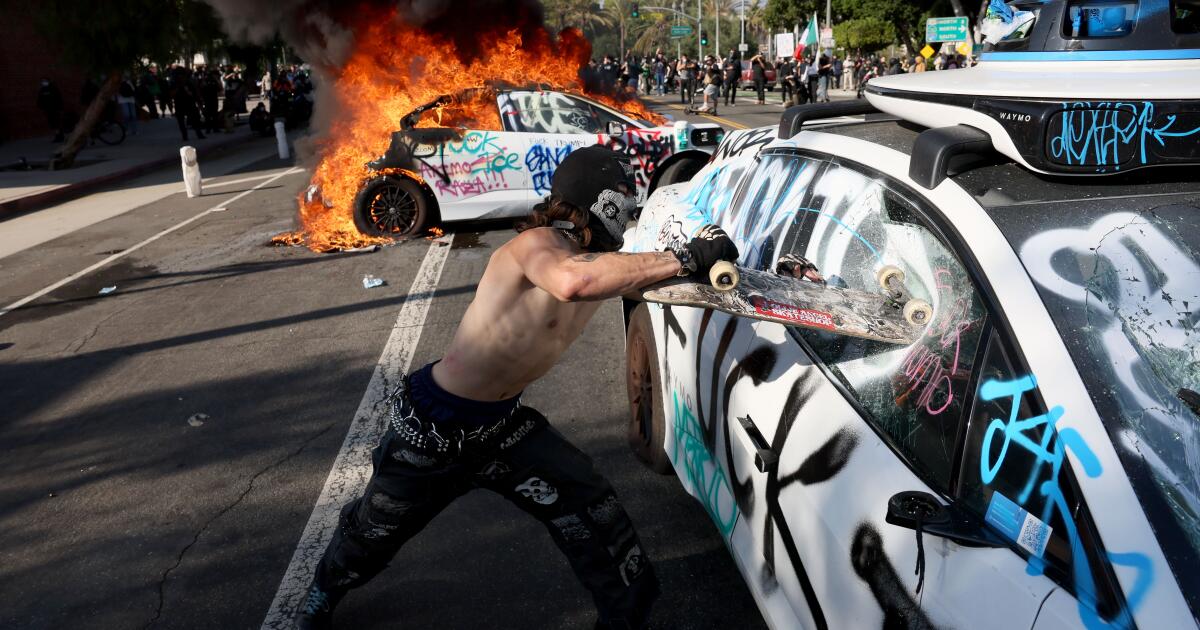
 Business1 week ago
Business1 week agoWaymo halts service in downtown Los Angeles amid ICE protests
-
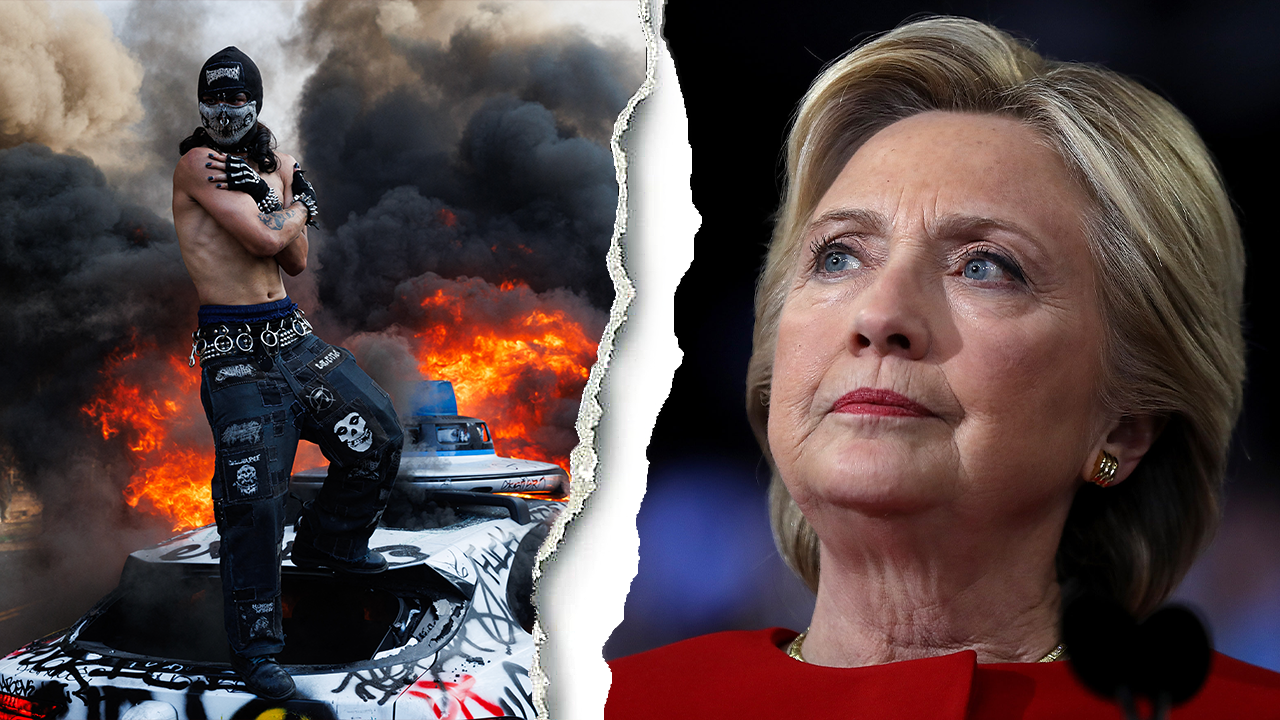
 Politics1 week ago
Politics1 week agoFox News Politics Newsletter: Hillary ‘Can’t Handle the Ratio'




